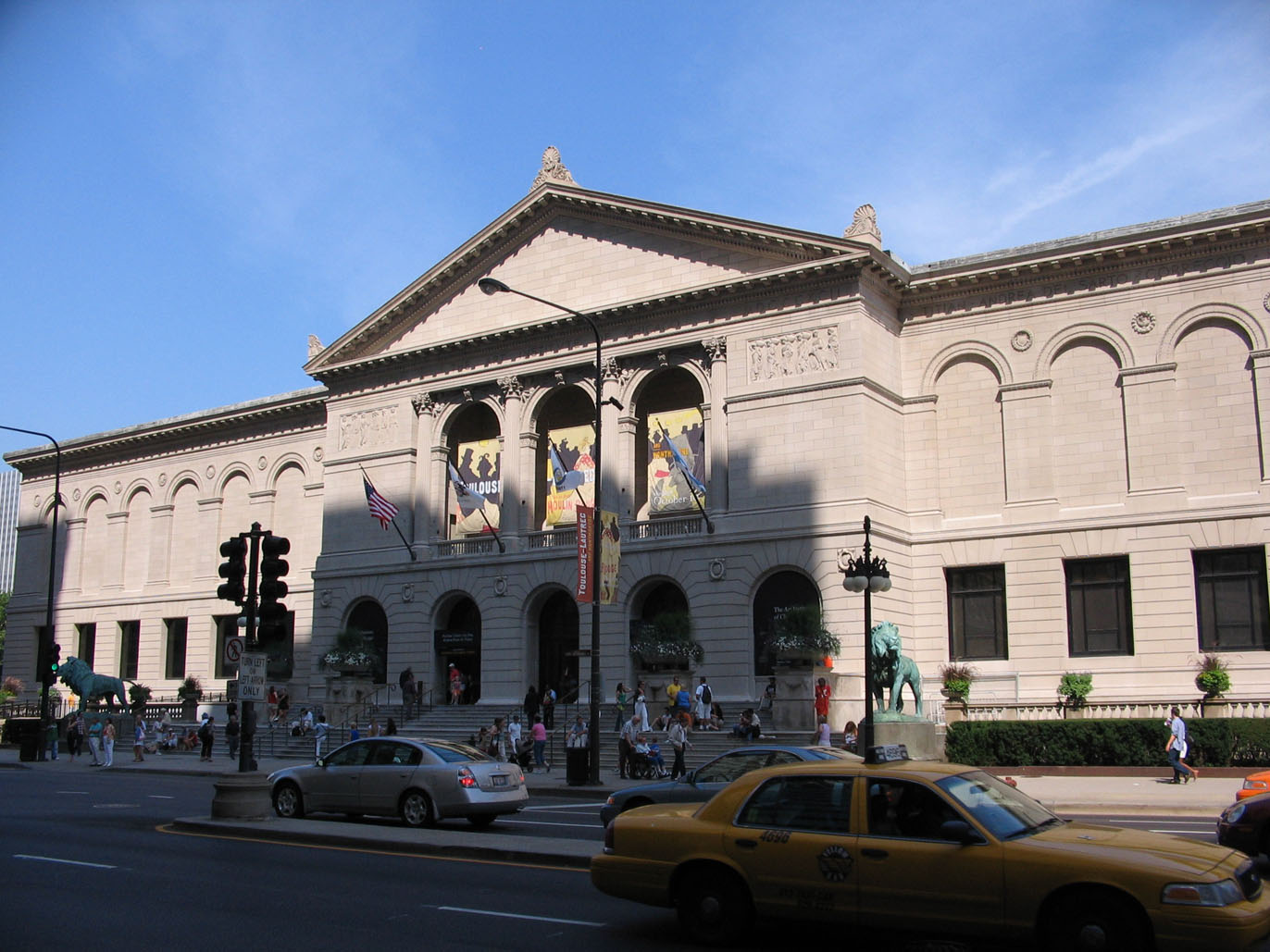
News
Cambridge Residents Slam Council Proposal to Delay Bike Lane Construction

News
‘Gender-Affirming Slay Fest’: Harvard College QSA Hosts Annual Queer Prom

News
‘Not Being Nerds’: Harvard Students Dance to Tinashe at Yardfest

News
Wrongful Death Trial Against CAMHS Employee Over 2015 Student Suicide To Begin Tuesday

News
Cornel West, Harvard Affiliates Call for University to Divest from ‘Israeli Apartheid’ at Rally
Impersonal Intimacy: The Art Institute of Chicago’s COVID-19 Evolution

There is a distinct physicality to engaging with art in a museum. Careful not to step in too close and sound the mortifying alarm, one peers at jagged strokes of acrylic or the luminous contours of an ancient pot. It is this physical proximity — this closeness to a piece so seemingly accessible yet elusive — that lends wonder, passion, and intellectual challenge to the experience of viewing art.
What, then, are the implications for art during the era of COVID-19? How can museums preserve the revelatory, deeply private experience of artistic engagement in a time of mass digitization?
The Art Institute of Chicago, commonly lauded as downtown Chicago’s — and the world’s — best museum, faced the same challenge as all of its counterparts following the pandemic: how to best maintain intimate access to artistic masterworks in a cold, pixelated cyberspace. In response, they demonstrated a singular capacity to capitalize on a bad situation.
Certain setbacks are inevitable. Visitors can no longer glimpse the oxidized hides of the two bronze lions guarding the museum’s entrance on Michigan Avenue. They cannot dine on lemon-herb tofu within the panoramic glass walls of Terzo Piano, nor can they buy a gift shop mug embossed with the bold geometry of a Mondrian.
Since the museum is only open during select hours, new initiatives promote digital engagement to suit at-home schedules. “Monet and Chicago,” an exhibition that runs until Jan. 18, 2021, is complemented by videos detailing the artist’s exacting artistic techniques. One such video, titled “Discovering Monet | Beyond the Surface,” expounds his role in shaping Impressionism. Interspersed with ruminations from Monet’s personal letters, the video depicts conservators’ use of infrared imagery to track the chronology of paint strokes, providing viewers a privileged glimpse into the Parisian’s artistic process.
A subpage on the museum’s website titled “Interactive Features” allows digital visitors to learn the historical context behind pieces. A virtual dialogue on El Greco’s iconic “The Assumption of the Virgin” describes its journey from a convent in Toledo, Spain, to Chicago. A string of paragraphs detail the nuanced iconography of a Chinese bell or “nao” from roughly 1046 BCE dubbed the “Sound of Heaven.” As one scrolls down the page, the bell turns slowly, simulating a viewer’s circular orbit around the ancient artifact.
Perhaps most representative of the museum’s offerings is “The Collection,” an information-rich archive of all possessed works. From Vincent van Gogh’s “The Bedroom” to George Seurat’s “A Sunday on La Grande Jatte,” Pablo Picasso’s “The Old Guitarist” to Katsushika Hokusai’s “Under the Wave off Kanagawa,” “The Collection” boasts some of the world’s most coveted masterpieces.
A digital museum experience lends viewers the unique opportunity to completely control the pace of their artistic journeys. At in-person museums, one can linger over paintings — especially famous ones — for only so long before receiving miffed glances from fellow visitors or shouldering one’s way out of a claustrophobic crowd. Here, however, there is an audience of one: All materials revolve around the singular viewer who has entered the digital exhibit’s impersonal yet deeply private space.
Digitized art exemplifies a classic quarantine ambivalence. Though increased online access has served as a broad equalizer, excessive online activity can be exhausting and reductive. The Art Institute of Chicago’s digital offerings eliminate obstacles such as transportation and membership fees that could discourage in-person visitation. At the same time, expanded availability dulls the allure of the experience: There is no longer one “Greyed Rainbow” by Jackson Pollock in the museum’s Gallery 291 but, rather, countless pixelated facsimiles glowing on screens around the world.
The physical experience of exploring an art museum occasionally induces a state of focused, rhapsodic buoyancy. Time as we know it assumes an element of surreality, humming with the wonder and affective complexities evoked by art. Processing a piece in person is like being in conversation with an entity that speaks an inaccessible language but still manages to provoke visceral awe.
Though digital offerings are incomparable to the traditional art museum experience, it is possible to alchemize time from the comfort — or confines — of home. Quarantine has blended the hours into an indiscriminate soup of exhaustion, responsibilities, and ennui. By opening our laptops not to respond to emails or haphazardly complete a paper by its midnight deadline but, rather, engage with an art museum’s digital offerings, we can slow down and revel in a sense of intense inquiry. The challenging, non-linear reflection that art demands can breathe life into our newly flattened relationships with time.
French artist Paul Gauguin once said, “I shut my eyes in order to see.” Indeed, the pandemic has forced people and entire countries — perhaps even the global community at large — to shut their eyes in countless ways. From this disorientation and blindness, however, emerge new ways of seeing, of making use of what remains.
It is likely that when the quarantine ends and people venture into the world, they will encounter ordinary things as if for the first time: a coffee at the local cafe, a leisurely stroll along the shores of a beach, a room full of art enjoyed in the animal warmth of other contemplative souls.
When that time comes, people will flock to museums. Until then, individuals will have to seek revelation through the uncanny, intriguing world of digital art. The Art Institute of Chicago has affirmed that even in this time of necessary isolation, engaging with art can remain a singular and sacred experience.
Want to keep up with breaking news? Subscribe to our email newsletter.
